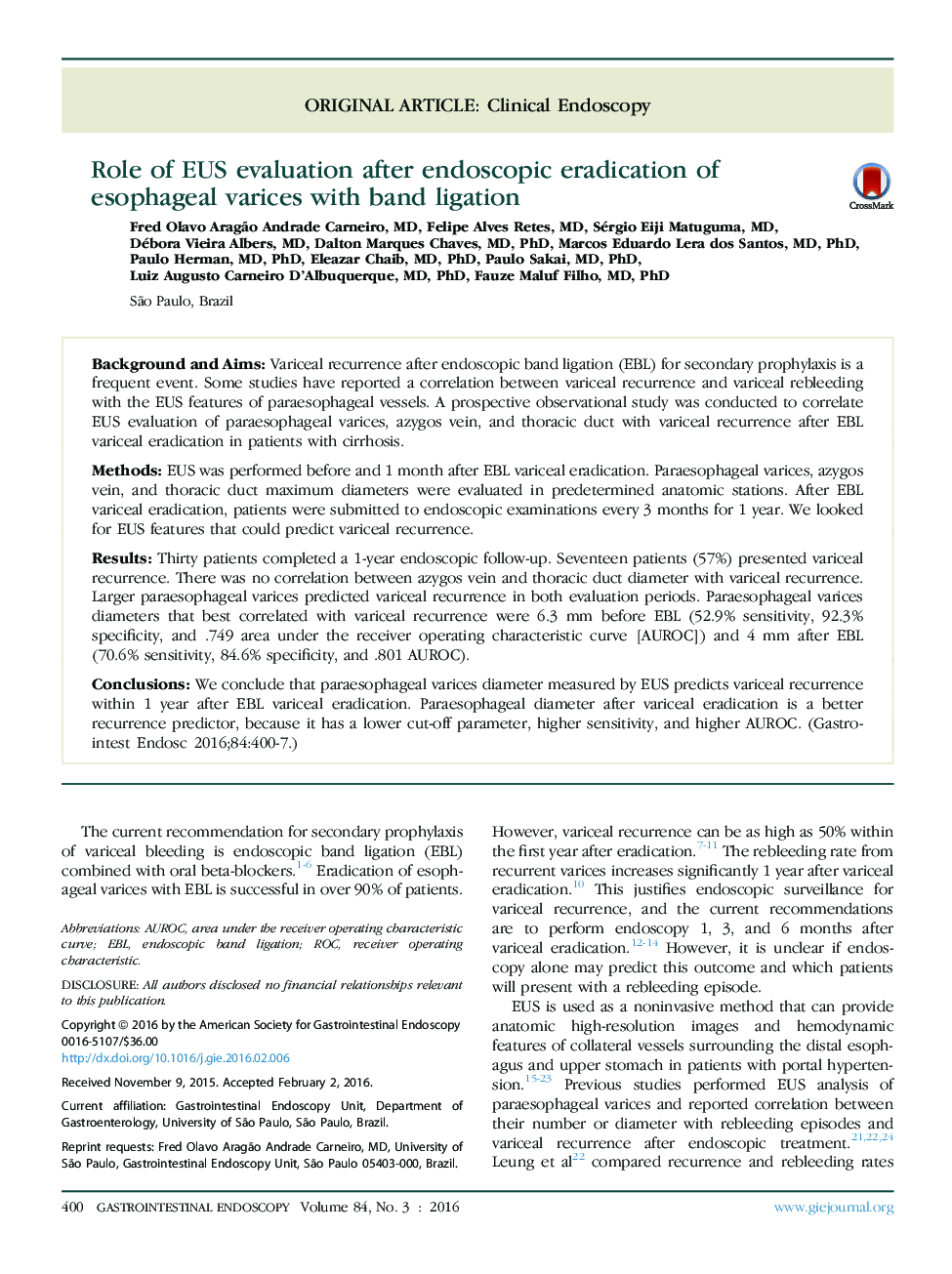| Article ID | Journal | Published Year | Pages | File Type |
|---|---|---|---|---|
| 3301866 | Gastrointestinal Endoscopy | 2016 | 8 Pages |
Background and AimsVariceal recurrence after endoscopic band ligation (EBL) for secondary prophylaxis is a frequent event. Some studies have reported a correlation between variceal recurrence and variceal rebleeding with the EUS features of paraesophageal vessels. A prospective observational study was conducted to correlate EUS evaluation of paraesophageal varices, azygos vein, and thoracic duct with variceal recurrence after EBL variceal eradication in patients with cirrhosis.MethodsEUS was performed before and 1 month after EBL variceal eradication. Paraesophageal varices, azygos vein, and thoracic duct maximum diameters were evaluated in predetermined anatomic stations. After EBL variceal eradication, patients were submitted to endoscopic examinations every 3 months for 1 year. We looked for EUS features that could predict variceal recurrence.ResultsThirty patients completed a 1-year endoscopic follow-up. Seventeen patients (57%) presented variceal recurrence. There was no correlation between azygos vein and thoracic duct diameter with variceal recurrence. Larger paraesophageal varices predicted variceal recurrence in both evaluation periods. Paraesophageal varices diameters that best correlated with variceal recurrence were 6.3 mm before EBL (52.9% sensitivity, 92.3% specificity, and .749 area under the receiver operating characteristic curve [AUROC]) and 4 mm after EBL (70.6% sensitivity, 84.6% specificity, and .801 AUROC).ConclusionsWe conclude that paraesophageal varices diameter measured by EUS predicts variceal recurrence within 1 year after EBL variceal eradication. Paraesophageal diameter after variceal eradication is a better recurrence predictor, because it has a lower cut-off parameter, higher sensitivity, and higher AUROC.
